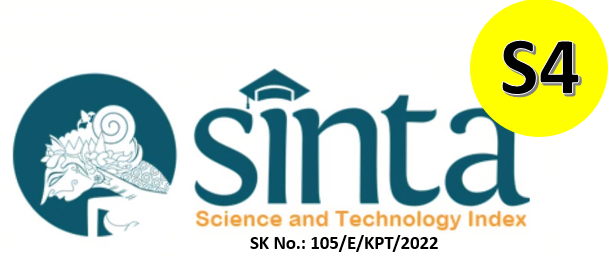Isolasi dan Karakterisasi Mikroorganisme Endofit Akar Ginseng Jawa (Talinum paniculatum Gaertn.) Yang Diberi Perlakuan Perbedaan Ketersedian Air
DOI:
https://doi.org/10.29080/biotropic.v7i1.1694Keywords:
Javanese Gingseng, Endophytes, Water AvailabilityAbstract
A medicinal plant known as Java ginseng (Talinum paniculatum Gaertn.) may thrive in a variety of water availability situations. The quantity of endophytic bacteria a plant contains affects its capacity to survive in stressful environments. The objective of this study was to identify and separate endophytic bacteria from Javanese ginseng roots that had undergone various water availability treatments. A description method was utilized, in which isolated isolates were given morphological descriptions, assessed for similarity indexes, and then categorized. Endophytic microbe abundance and diversity varied according to this study, but plants treated with water scarcity displayed higher abundance and diversity. While endophytes of plant origin treated with 60% field capacity (FC) had the maximum diversity, root samples treated with 80% (FC) had the highest microbial abundance. Ten species groupings were created from the 42 isolated isolates based on a coefficient value of > 70%.
Downloads
References
Cappuccino, J. . G., & Sherman, N. 2013. icrobiology: A Laboratory Manual (10th ed.). Pearson.
Chiellini, C., Maida, I., Emiliani, G., Mengoni, A., Mocali, S., Fabiani, A., Biffi, S., Maggini, V., Gori, L., Vannacci, A., Gallo, E., Firenzuoli, F., & Fani, R. 2015. Endophytic and rhizospheric bacterial communities isolated from the medicinal plants echinacea purpurea and echinacea angustifolia. International Microbiology, 17(3), 165–174. https://doi.org/10.2436/20.1501.01.219
Cohen, A. C., Bottini, R., Pontin, M., Berli, F. J., Moreno, D., Boccanlandro, H., Travaglia, C. N., & Piccoli, P. N. 2015. Azospirillum brasilense ameliorates the response of Arabidopsis thaliana to drought mainly via enhancement of ABA levels. Physiologia Plantarum, 153(1), 79–90. https://doi.org/10.1111/ppl.12221
Coleman-Derr, D., & Tringe, S. G. 2014. Building the crops of tomorrow: Advantages of symbiont-based approaches to improving abiotic stress tolerance. Frontiers in Microbiology, 5(JUN), 1–6. https://doi.org/10.3389/fmicb.2014.00283
Deng, Z. S., Zhao, L. F., Kong, Z. Y., Yang, W. Q., Lindström, K., Wang, E. T., & Wei, G. H. 2011. Diversity of endophytic bacteria within nodules of the Sphaerophysa salsula in different regions of Loess Plateau in China. FEMS Microbiology Ecology, 76(3), 463–475. https://doi.org/10.1111/j.1574-6941.2011.01063.x
Ginting, L., Wijanarka, & Kusdiyantini, E. 2020. Isolasi bakteri endofit tanaman pepaya (carica papaya L.) dan uji aktivitas enzim amilase. Berkala Bioteknologi, 3(2), 1–7.
Kamran, M., Imran, Q. M., Ahmed, M. B., Falak, N., Khatoon, A., & Yun, B. W. 2022. Endophyte-Mediated Stress Tolerance in Plants: A Sustainable Strategy to Enhance Resilience and Assist Crop Improvement. Cells, 11(20), 1–17. https://doi.org/10.3390/cells11203292
Leboffe, M. J., & Pierce, B. E. 2016. Microbiology: Laboratory Theory and Application (3rd ed.). Morton Publishing Company.
Molina-Montenegro, M. A., Oses, R., Torres-Díaz, C., Atala, C., Zurita-Silva, A., & Ruiz-Lara, S. 2016. Root-endophytes improve the ecophysiological performance and production of an agricultural species under drought condition. AoB PLANTS, 8, 1–11. https://doi.org/10.1093/aobpla/plw062
Nath, A., Singh, Y. J., Asghar, A., Neelam, R., & Editors, Y. 2020. Sustainable Development and Biodiversity - Plant Microbiomes for Sustainable Agriculture. http://www.springer.com/series/11920
Nurcahya, I., Manik, V. T., Matira, N. I., Natawijaya, D., & Sudartini, T. 2022. Pertumbuhan Tanaman Ginseng Jawa (Talinum paniculatum Gaertn) yang Dipengaruhi Volume Penyiraman. Paspalum, 10(2), 180–185. https://doi.org/http://dx.doi.org/10.35138/paspalum.v10i2.445
Rana, K. L., Kour, D., Sheikh, I., Yadav, N., Yadav, A. N., Kumar, V., Singh, B. P., Dhaliwal, H. S., & Saxena, A. K. 2019. Biodiversity of Endophytic Fungi from Diverse Niches and Their Biotechnological Applications. https://doi.org/10.1007/978-3-030-03589-1_6
Ryan, R. P., Germaine, K., Franks, A., Ryan, D. J., & Dowling, D. N. 2008. Bacterial endophytes: Recent developments and applications. FEMS Microbiology Letters, 278(1), 1–9. https://doi.org/10.1111/j.1574-6968.2007.00918.x
Sulistyanto, W. N., & Trimulyono, G. 2019. Karakterisasi Fenotip dan Indeks Similaritas Isolat Actinomycetes yang Memiliki Kemampuan Antibakteri terhadap Escherichia coli dan Staphylococcus aureus. Biotropika: Journal of Tropical Biology, 7(3), 112–120. https://doi.org/10.21776/ub.biotropika.2019.007.03.4
Suratman, S., Priyanto, D., & Setyawan, A. D. 2000. Variance Analysis of Genus Ipomoea based on Morphological Characters. Biodiversitas Journal of Biological Diversity, 1(2), 72–79. https://doi.org/10.13057/biodiv/d010206
Thom, E. R., Popay, A. J., Hume, D. E., & Fletcher, L. R. 2012. Evaluating the performance of endophytes in farm systems to improve farmer outcomes - A review. Crop and Pasture Science, 63(10), 927–943. https://doi.org/10.1071/CP12152
Walitang, D. I., Kim, C. G., Kim, K., Kang, Y., Kim, Y. K., & Sa, T. 2018. The influence of host genotype and salt stress on the seed endophytic community of salt-sensitive and salt-tolerant rice cultivars. BMC Plant Biology, 18(1), 1–16. https://doi.org/10.1186/s12870-018-1261-1
Downloads
Published
How to Cite
Issue
Section
License
Copyright (c) 2023 Visi Tinta Manik

This work is licensed under a Creative Commons Attribution-NonCommercial-ShareAlike 4.0 International License.













